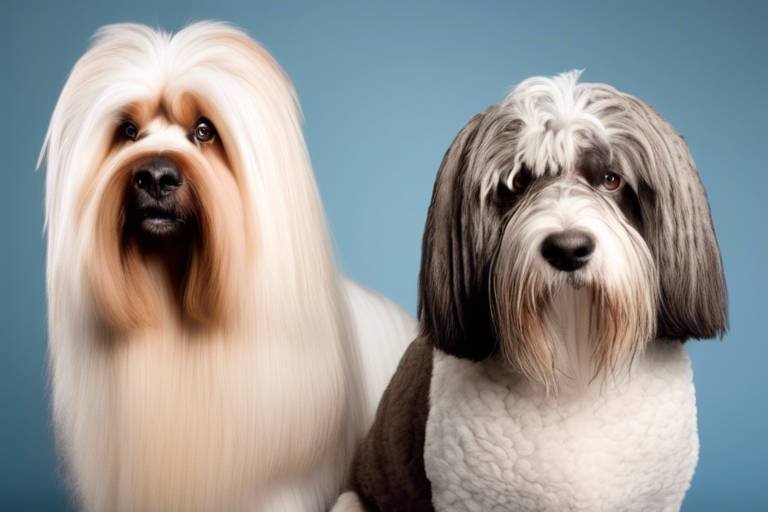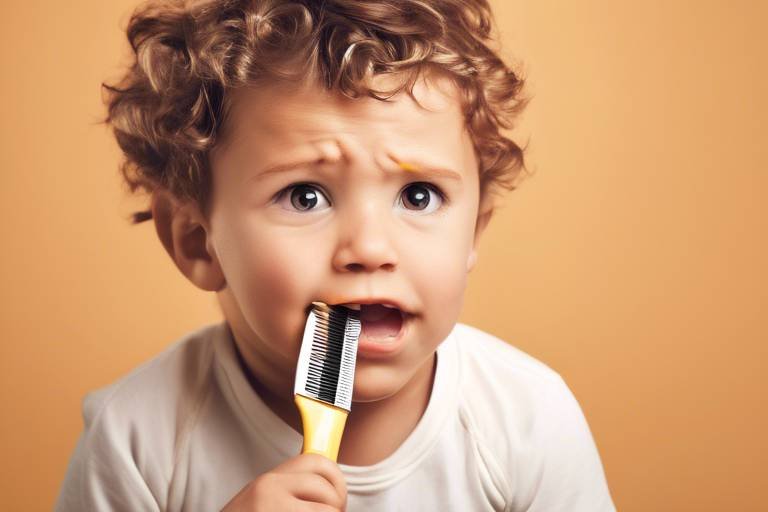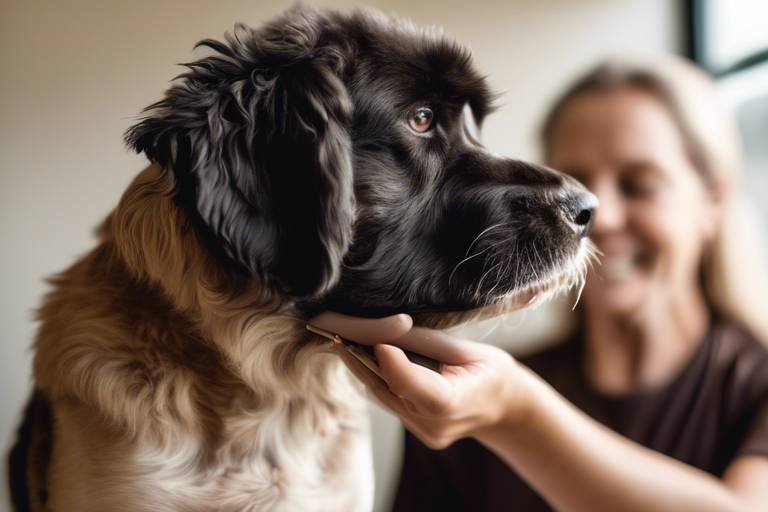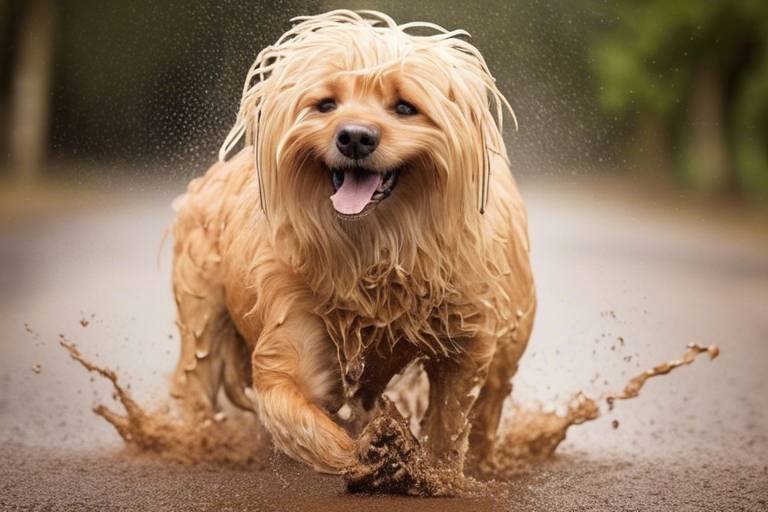How to Train Your Pet to Enjoy Grooming
Grooming your pet can seem like a daunting task, both for you and your furry friend. However, it doesn't have to be a battle every time! With the right techniques and a bit of patience, you can transform grooming sessions into a positive experience that both you and your pet will look forward to. Imagine turning what was once a stressful chore into a bonding time filled with love and trust. In this article, we will explore effective methods to train your pet to enjoy grooming, ensuring that both of you can relax and enjoy the process.
Before diving into the grooming process, it's essential to understand your pet's feelings. Pets, just like humans, can experience anxiety. Recognizing the signs of anxiety in your pet is crucial for creating a comfortable grooming environment. Common behaviors to look out for include:
- Hiding or trying to escape
- Excessive barking or whining
- Growling or snapping
- Shaking or cowering
If you notice any of these signs, it's important to address them before starting the grooming process. Take time to reassure your pet and create a calm atmosphere. This could mean using soothing music, soft lighting, or even a favorite blanket to help them feel secure.
The tools you use for grooming can significantly impact your pet's comfort level. Selecting appropriate grooming tools not only ensures a better grooming experience but also keeps your pet safe. Here’s a quick overview of essential grooming tools:
| Tool | Purpose | Benefits |
|---|---|---|
| Brushes | Removing loose fur and preventing matting | Reduces shedding and promotes a healthy coat |
| Combs | Smoothing out tangles and checking for pests | Helps in maintaining coat health and cleanliness |
| Clippers | Trimming fur | Provides a neat appearance and keeps pets comfortable |
| Scissors | Detailed trimming around sensitive areas | Allows for precision grooming without the risk of injury |
Each tool serves a unique purpose, and using the right one for your pet’s coat type and grooming needs can make a world of difference.
When it comes to grooming, different pets require different brushes. For instance, long-haired breeds may benefit from a slicker brush to remove tangles, while short-haired pets might do well with a bristle brush. Understanding your pet's coat type is key:
- Long-haired pets: Use a wide-toothed comb followed by a slicker brush.
- Short-haired pets: A rubber curry brush can be effective.
- Curly-haired pets: Opt for a pin brush to prevent matting.
Choosing the right brush not only improves grooming efficiency but also makes the experience more enjoyable for your pet.
Using clippers and scissors can be intimidating for pets. To ease their fear, introduce these tools gradually. Start by letting your pet sniff the clippers while they are turned off, allowing them to get accustomed to the sight and sound. Gradually turn the clippers on and reward your pet with treats and praise. This positive association will help them feel more comfortable during actual grooming sessions.
Creating a consistent grooming schedule is essential for helping your pet get used to the process. Just like us, pets thrive on routine. By establishing a regular grooming schedule, your pet will begin to associate grooming with a normal part of their day. Consistency is key!
Keeping grooming sessions short and positive is crucial for building trust. Aim for sessions that last no longer than 10-15 minutes, especially when starting out. Incorporate playtime or treats at the end of each session to reinforce positive behavior. This can make a world of difference in how your pet views grooming.
Introducing grooming gradually can significantly reduce anxiety. Start with just a few minutes of brushing or combing, then gradually increase the duration as your pet becomes more comfortable. Make sure to praise them and offer treats throughout the process to create a positive learning experience.
Using positive reinforcement is one of the most effective ways to enhance your pet's grooming experience. This technique involves rewarding your pet for good behavior, making them more likely to repeat it in the future. Here are some strategies you can implement:
Verbal praise and treats are effective motivators. Whenever your pet behaves well during grooming, shower them with praise and give them a small treat. This creates a strong association between grooming and positive outcomes, making them more eager to cooperate in the future.
A calm grooming environment can make a significant difference in your pet's comfort level. Minimize distractions by turning off loud TVs or radios, and consider using calming scents, such as lavender, to soothe your pet. A peaceful atmosphere can help your furry friend relax, making grooming sessions much smoother.
Q: How often should I groom my pet?
A: The frequency of grooming depends on your pet's breed and coat type. Long-haired breeds may need grooming several times a week, while short-haired pets may only require grooming every few weeks.
Q: What should I do if my pet resists grooming?
A: If your pet resists grooming, take a step back and try to identify the cause of their anxiety. Gradual exposure and positive reinforcement can help ease their fears.
Q: Can I groom my pet myself, or should I take them to a professional?
A: Many pet owners successfully groom their pets at home. However, if you're unsure or if your pet has specific grooming needs, consulting a professional groomer can be beneficial.

Understanding Your Pet's Anxiety
When it comes to grooming your beloved furry friend, understanding their anxiety is the first step in making the experience less stressful for both of you. Just like humans, pets can feel anxious, especially when faced with unfamiliar situations or tools. You might notice your pet showing signs of discomfort, such as panting, whimpering, or even trying to hide. These behaviors can be their way of communicating that they’re not comfortable with what's happening around them.
It's essential to recognize these signs early on. For instance, if your dog starts to back away or your cat hisses when you bring out the grooming tools, they’re telling you something. Ignoring these signals can lead to a more significant issue down the line, making grooming a dreaded experience for your pet. Instead, take a moment to observe their body language. Common signs of anxiety in pets include:
- Pacing or Restlessness: If your pet can’t seem to settle down, it might indicate that they’re feeling uneasy.
- Excessive Grooming: Pets may groom themselves more than usual when they’re anxious, which can lead to skin issues.
- Vocalizations: Whining, barking, or meowing can be a clear sign that your pet is uncomfortable.
- Trying to Escape: If your pet tries to hide or escape during grooming, it’s a strong indicator of anxiety.
Addressing these signs before diving into the grooming process is crucial. Start by creating a positive association with grooming tools. You can do this by allowing your pet to sniff the tools or rewarding them with treats when they show curiosity instead of fear. This way, you’re helping them understand that grooming doesn’t have to be a scary experience. It's all about building trust and ensuring they feel safe in your hands.
Moreover, consider the environment in which you groom your pet. A noisy or chaotic setting can amplify their anxiety. Instead, choose a quiet and comfortable space where your pet feels secure. You could even play some calming music or use pheromone sprays designed to soothe anxious pets. Remember, the more relaxed your pet is, the easier the grooming process will be.
In conclusion, understanding your pet's anxiety is not just about recognizing their discomfort; it’s about taking proactive steps to ease their fears. By being attentive to their signals and creating a positive grooming environment, you can transform grooming from a dreaded chore into a bonding experience that both you and your pet will look forward to.
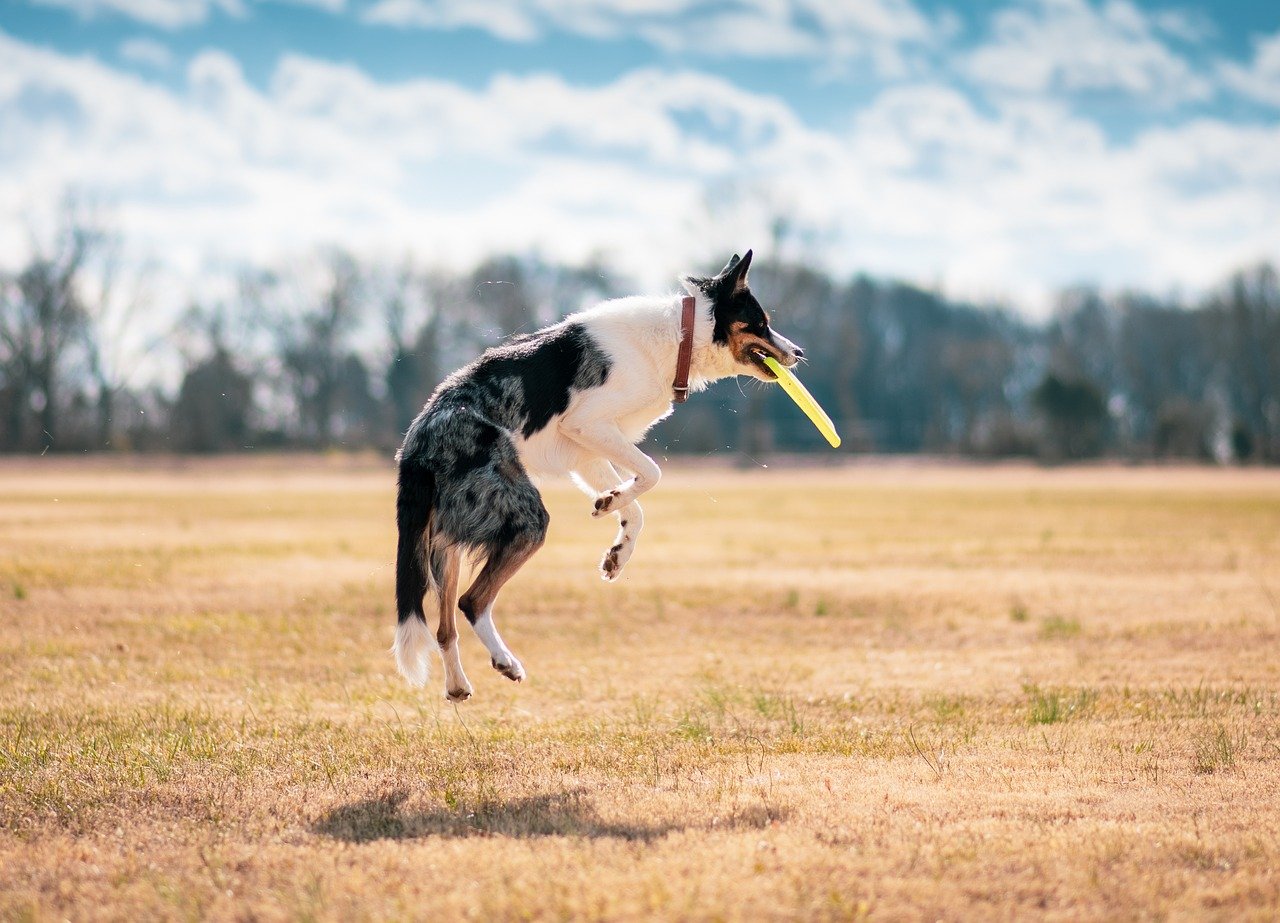
Choosing the Right Tools
When it comes to grooming your pet, can make all the difference in the world. Just like you wouldn’t use a hammer to screw in a lightbulb, using the wrong grooming tools can lead to a stressful experience for both you and your furry friend. So, how do you pick the best tools? It all starts with understanding your pet's specific needs and preferences.
First and foremost, consider your pet's coat type. Is it long, short, curly, or straight? Each type of coat requires different grooming tools to keep it looking fabulous. For instance, a long-haired cat might need a slicker brush to detangle those pesky knots, while a short-haired dog may be best suited to a bristle brush that helps distribute natural oils in their fur. It’s essential to do a little homework on the grooming requirements of your specific breed.
To make this easier, here’s a quick breakdown of some common coat types and the tools that work best for them:
| Coat Type | Recommended Tools |
|---|---|
| Long Hair | Slicker Brush, Wide-Toothed Comb |
| Short Hair | Bristle Brush, Rubber Grooming Mitt |
| Curly Hair | Pin Brush, Dematting Comb |
| Wire Hair | Stripping Knife, Bristle Brush |
Next, let’s talk about clippers and scissors. These tools can be a bit intimidating for pets, especially if they associate them with previous negative experiences. It's vital to introduce these tools gradually. Start by letting your pet sniff the clippers while they’re turned off, and reward them with treats to create a positive association. Once they seem comfortable, you can turn them on and let them hear the sound. This gradual exposure will help alleviate their fears and make the grooming process smoother.
Finally, don’t underestimate the importance of having the right grooming supplies on hand. Beyond brushes and clippers, consider investing in high-quality shampoos, conditioners, and nail clippers. A good shampoo will not only keep your pet clean but also ensure their skin stays healthy. Just like us, pets can have sensitive skin, so look for products that are hypoallergenic or formulated for their specific skin type.
In summary, choosing the right grooming tools is not just about aesthetics; it’s about ensuring your pet feels safe and comfortable during the grooming process. Whether it’s the right brush for their coat type or the proper clippers to keep them looking sharp, the tools you select play a crucial role in making grooming a positive experience. So take the time to choose wisely, and your pet will thank you for it!
Brushes and Combs
When it comes to grooming your furry companion, choosing the right brush or comb is essential. Just like humans have different hair types that require specific care, pets also have a variety of coat types that necessitate particular grooming tools. Using the appropriate brush or comb not only makes the grooming process more effective but also ensures that your pet feels comfortable and relaxed. Imagine trying to detangle your hair with a rough brush—yikes! Your pet deserves better.
Let’s break down the different types of brushes and combs available, so you can select what best suits your pet's needs:
| Coat Type | Recommended Brush/Comb | Benefits |
|---|---|---|
| Short Hair | Slicker Brush | Removes loose hair and prevents matting. |
| Medium Hair | Paddle Brush | Gently detangles while distributing natural oils. |
| Long Hair | Wide-Tooth Comb | Helps in detangling without pulling on the hair. |
| Curly or Wavy Hair | Pin Brush | Prevents matting and keeps curls defined. |
It’s important to note that not all brushes are created equal. For instance, a slicker brush is fantastic for removing mats and tangles in long-haired breeds, but it can be too harsh for short-haired pets. Similarly, a bristle brush might feel soothing for your pet, but it may not effectively remove loose fur. Always consider your pet's comfort and coat type when selecting tools.
Additionally, the grooming experience can be enhanced by introducing the brush or comb gradually. Let your pet sniff the tool before using it. This simple act can demystify the brush and make it less intimidating. Once your pet seems comfortable, start with gentle strokes in areas they enjoy being petted. This way, they associate grooming with positive experiences.
In summary, investing in the right brushes and combs tailored to your pet's coat type can make a world of difference. Not only will it lead to a more effective grooming session, but it will also help your furry friend feel more at ease. Remember, grooming should be a bonding experience, not a battle!
Clippers and Scissors
When it comes to grooming your pet, can be a source of anxiety for many furry friends. The buzzing sound of clippers or the sight of scissors can send shivers down their spine. But fear not! With a little patience and the right approach, you can help your pet feel more at ease during these grooming sessions. The key is to introduce these tools gradually, in a way that associates them with positive experiences.
Start by letting your pet explore the clippers and scissors while they are turned off. Allow them to sniff and investigate these tools at their own pace. This initial exposure is crucial in helping them understand that these items are not harmful. You might even want to hold the clippers near them while offering treats or their favorite toy. This way, they start to associate the presence of clippers with something enjoyable.
Once your pet seems comfortable with the tools, it's time to turn them on—but keep the noise low at first. You can do this by holding the clippers away from your pet and letting them hear the sound without the tool being too close. If your pet shows signs of fear, such as backing away or whining, take a step back and give them more time to adjust. Remember, the goal is to create a positive association with the sound before you actually use the clippers on them.
When you finally feel your pet is ready for a grooming session, start with small areas. For instance, if you’re using clippers, try trimming just a small patch of fur and then immediately reward your pet with praise or a treat. This not only builds trust but also reinforces the idea that grooming can be a fun and rewarding experience.
As for scissors, the same principles apply. Begin with scissors that have rounded tips to minimize the risk of injury. Allow your pet to see and smell the scissors while you gently handle them. You can even practice making snipping sounds with the scissors while offering treats, so they begin to understand that this sound is part of a fun grooming routine.
Here’s a quick reference table to help you choose the right clippers and scissors for your pet:
| Tool Type | Best For | Features |
|---|---|---|
| Clippers | Long-haired breeds | Adjustable blade lengths, quiet operation |
| Scissors | Detail work and trimming | Rounded tips for safety, ergonomically designed handles |
| Thinning Shears | Reducing bulk in thick coats | Blended cutting edges, lightweight |
Ultimately, the goal is to make grooming a stress-free experience for both you and your pet. Remember, patience is key. The more comfortable your pet becomes with clippers and scissors, the more they will look forward to their grooming sessions. With time, they’ll realize that these tools are simply part of a loving routine that keeps them looking and feeling their best.
- How often should I groom my pet? It depends on the breed. Long-haired pets may need grooming every few weeks, while short-haired breeds may require less frequent grooming.
- What should I do if my pet is still anxious after trying these techniques? Consider consulting a professional groomer or a veterinarian who can provide additional advice tailored to your pet's needs.
- Can I use human clippers on my pet? It's not recommended, as human clippers may not be designed for animal fur and could cause discomfort.
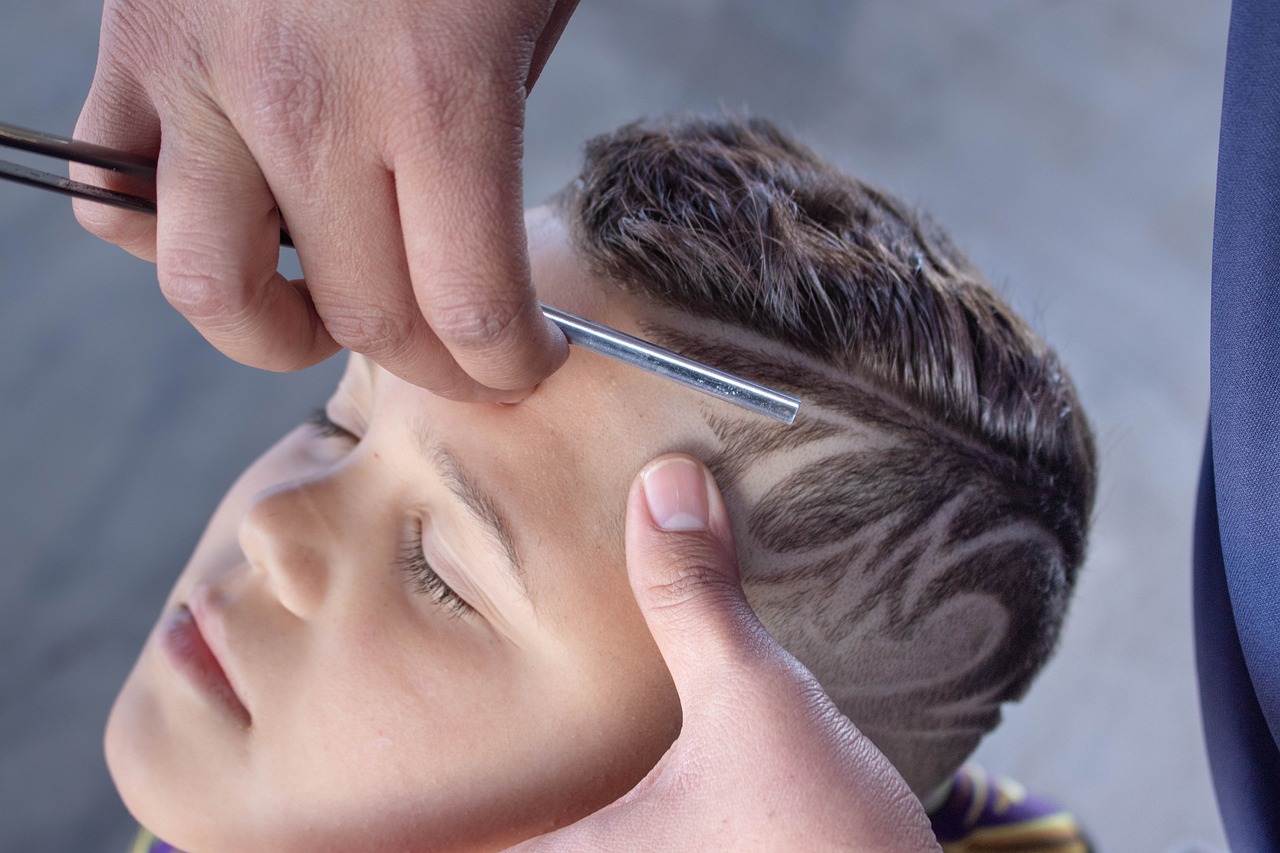
Establishing a Routine
Establishing a grooming routine is not just beneficial; it's essential for both you and your pet. Imagine this: your furry friend starts to associate grooming with a regular part of their day, just like meal times or playtime. This consistency helps them feel more at ease and reduces any anxiety they might have about the process. The key is to create a schedule that works for both of you, ensuring that grooming becomes a positive experience rather than a dreaded chore.
To effectively establish a grooming routine, you should consider the frequency of grooming sessions based on your pet's specific needs. For instance, long-haired breeds typically require more frequent grooming compared to short-haired ones. Here's a quick reference table to help you determine how often you should groom your pet:
| Pet Type | Recommended Grooming Frequency |
|---|---|
| Short-Haired Dogs | Every 2-4 weeks |
| Long-Haired Dogs | Every 1-2 weeks |
| Short-Haired Cats | Monthly |
| Long-Haired Cats | Every 1-2 weeks |
Once you've established how often you should groom your pet, it’s time to set a specific time for these sessions. Choose a time when your pet is usually calm and relaxed, perhaps after a walk or play session. This way, they won’t associate grooming with stress or anxiety. Consistency is key! Try to stick to the same time and day each week, as this predictability can help your pet feel more comfortable.
Additionally, you can make grooming sessions part of a larger routine. For example, you might start with a little playtime, followed by grooming, and then reward your pet with their favorite treat or a cuddle session afterward. This sequence not only makes grooming more enjoyable but also reinforces the idea that it’s a positive experience. You could even create a little ritual around it, such as using a special blanket or a favorite toy during grooming time.
As you establish this routine, remember to keep the sessions short and sweet. Especially when starting out, aim for 5-10 minute sessions. Gradually increase the duration as your pet becomes more comfortable. This approach not only helps in building trust but also ensures that your pet doesn’t become overwhelmed. If your pet shows signs of discomfort, take a step back and give them a break. It’s all about making the experience enjoyable for them!
Lastly, don’t forget to monitor your pet’s reactions during grooming. If they seem stressed or anxious, it might be a sign to adjust your routine. Maybe they need more breaks, or perhaps you need to change the time of day you groom them. Regularly checking in with your pet's comfort level will help you refine your routine and make grooming a positive bonding experience.
- How often should I groom my pet? - Grooming frequency depends on your pet's coat type. Long-haired pets require more frequent grooming than short-haired ones.
- What if my pet hates grooming? - Start slowly, use positive reinforcement, and establish a routine to help them associate grooming with positive experiences.
- Can I groom my pet at home? - Absolutely! With the right tools and techniques, you can groom your pet comfortably at home.
Short, Positive Sessions
When it comes to grooming your pet, the key is to keep sessions short and positive. Imagine trying to enjoy a long, boring lecture; you’d likely tune out or become anxious, right? Your furry friend feels the same way during grooming. By breaking down the grooming process into smaller, manageable sessions, you can help your pet associate grooming with fun rather than fear. Start with just a few minutes at a time, gradually increasing the duration as your pet becomes more comfortable.
During these short sessions, focus on making the experience enjoyable. Use a gentle touch and speak in a calm, soothing voice. You can even play some soft music in the background to create a relaxing atmosphere. Remember, the goal here is to build trust and confidence. If your pet starts to show signs of stress, like pulling away or whining, it's a signal to wrap up the session. Ending on a positive note is crucial; this way, your pet will look forward to the next grooming session instead of dreading it.
To further enhance these short sessions, consider incorporating some fun activities. For example, after a few minutes of grooming, you could reward your pet with a game of fetch or a favorite toy. This not only makes grooming less intimidating but also reinforces the idea that grooming leads to playtime. The more your pet associates grooming with positive experiences, the more relaxed they’ll become during the process.
In addition to keeping sessions short, consistency is vital. Aim to groom your pet at the same time each week. This establishes a routine that your pet can anticipate, which can significantly reduce anxiety. Over time, as your pet becomes more accustomed to the process, you can gradually extend the duration of each session. Just remember, patience is key! Every pet is unique, and some may take longer than others to adjust.
Ultimately, the goal is to create a positive grooming experience that fosters a strong bond between you and your pet. By keeping sessions short and enjoyable, you’ll not only make grooming a breeze but also strengthen your relationship with your furry companion.
- How often should I groom my pet? The frequency of grooming depends on your pet's breed, coat type, and lifestyle. Generally, long-haired pets require more frequent grooming than short-haired ones.
- What if my pet doesn't like being groomed? Start with short sessions and gradually introduce grooming tools. Always use positive reinforcement to encourage good behavior.
- Can I groom my pet at home? Yes, many pet owners successfully groom their pets at home. Just ensure you have the right tools and knowledge to do so safely.
Gradual Exposure Techniques
When it comes to grooming your pet, the key to success often lies in the you employ. Think of it like introducing a child to a new activity; you wouldn’t throw them into the deep end of the pool right away, right? The same principle applies to our furry friends. Gradually familiarizing your pet with grooming tools and processes can significantly reduce their anxiety and build their confidence over time.
Start by introducing your pet to the grooming tools without any grooming happening. For instance, allow them to sniff the brush or comb, and let them explore these new objects at their own pace. You can place the tools on the floor and encourage your pet to investigate them. This initial exposure is crucial, as it helps them associate the tools with a safe environment. Make sure to use a calm and soothing voice during this process. Your tone can convey to your pet that there’s nothing to fear.
Next, consider breaking down the grooming process into small, manageable steps. For example, if you’re planning to brush your pet, start with just a few strokes on one side of their body. After a few strokes, give them a treat and some verbal praise. This positive reinforcement will help them associate grooming with good things, making them more likely to enjoy the experience in the future. You can continue this process over several days, gradually increasing the amount of time you spend grooming them until they’re comfortable with longer sessions.
To make it even more effective, you can create a simple schedule that outlines your gradual exposure plan. Here’s an example:
| Day | Activity | Duration |
|---|---|---|
| 1 | Introduce grooming tools | 5 minutes |
| 2 | Brush one side of the body | 5 minutes |
| 3 | Brush both sides | 10 minutes |
| 4 | Brush and include paws | 10 minutes |
| 5 | Full grooming session | 15 minutes |
As you progress through this plan, keep a close eye on your pet’s body language. Signs of stress, such as panting or trying to escape, indicate that you may need to slow down and take a step back. It’s essential to be patient and flexible; every pet is different, and some may require more time than others to acclimate to grooming.
Another effective technique is to incorporate play into the grooming routine. For example, after a successful grooming session, engage your pet in a game of fetch or tug-of-war. This not only reinforces the idea that grooming can be fun but also helps them associate it with positive experiences. You might say something like, “Look how good you did! Now let’s go play!” This creates a fantastic bridge between grooming and playtime.
In summary, gradual exposure techniques are all about patience and positive reinforcement. By introducing grooming tools slowly and ensuring that your pet feels safe and comfortable, you can transform grooming from a stressful chore into a delightful bonding experience. Remember, the goal is to create a routine that both you and your pet can look forward to, turning grooming into a time of connection and care.
- How long does it take for a pet to get used to grooming? Every pet is different. Some may take a few sessions, while others may need weeks or even months. Patience is key!
- What if my pet shows signs of aggression during grooming? It’s important to stop immediately and assess the situation. Gradual exposure may help, but consider consulting a professional trainer if aggression persists.
- Can I use grooming tools I already have? Yes, but ensure they are appropriate for your pet's coat type. Using the right tools can make a significant difference in their comfort level.
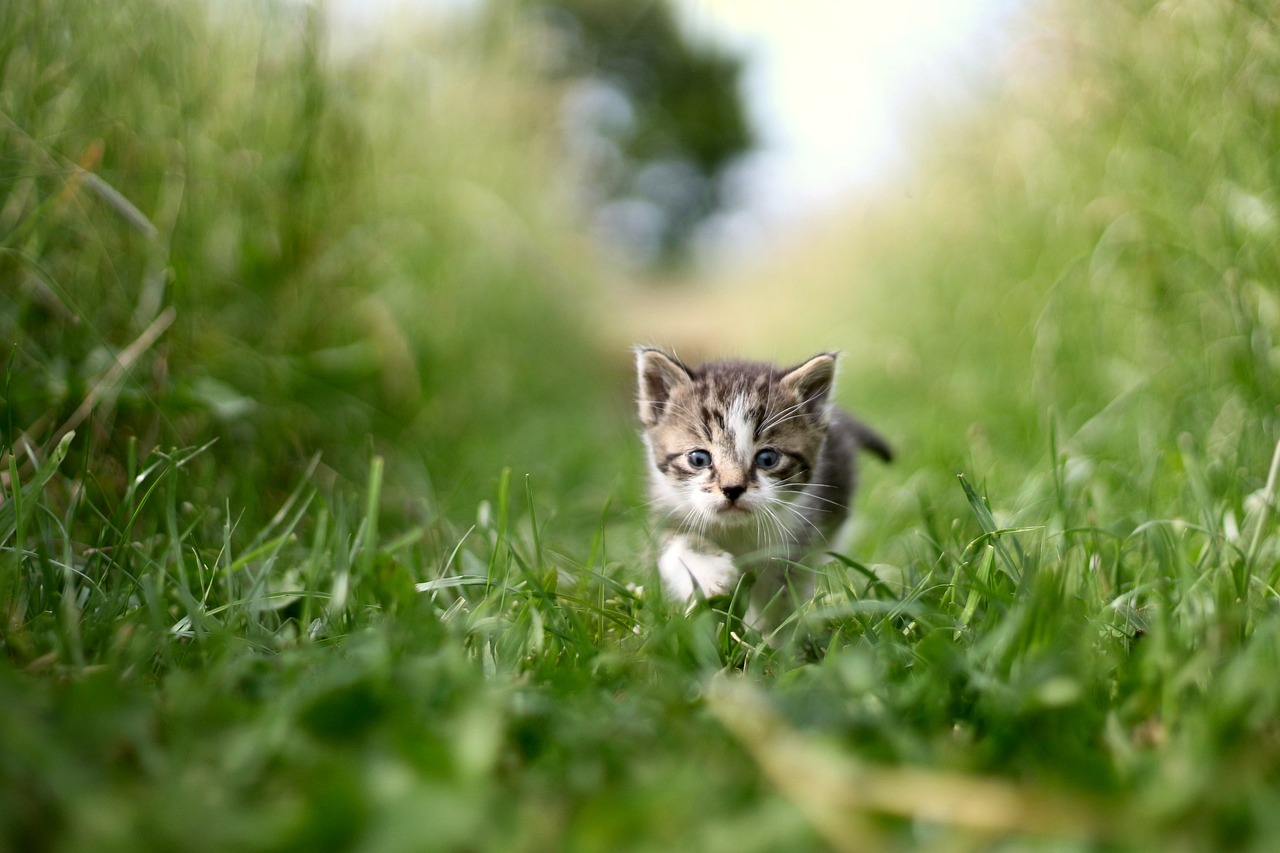
Positive Reinforcement Strategies
When it comes to grooming your pet, positive reinforcement is a game changer! It's all about making the experience enjoyable and rewarding for your furry friend, turning what might be a stressful situation into a fun bonding time. Just like how a child learns to ride a bike with a little encouragement and praise, pets thrive on the same principles. By using positive reinforcement, you can create a grooming routine that both you and your pet look forward to!
So, what exactly does positive reinforcement entail? Essentially, it involves rewarding your pet for exhibiting good behavior during grooming sessions. This can be done through a combination of verbal praise, treats, and even playtime. Imagine this: your pet sits still while you brush its fur, and you respond with an enthusiastic "Good boy!" paired with a tasty treat. This not only reinforces the behavior but also builds trust and makes your pet feel appreciated.
Here are some effective strategies to implement positive reinforcement:
- Verbal Praise: Always use an upbeat tone when your pet does something right. Your excitement can be contagious!
- Treats: Keep some of your pet's favorite treats handy. A small reward goes a long way in encouraging them to cooperate.
- Playtime: After a successful grooming session, engage in a fun game with your pet. This can be a great way to end on a high note!
It's important to remember that timing is everything. You want to deliver the reward immediately after the desired behavior to help your pet make the connection. For instance, if your dog stays calm while you trim its nails, offer a treat right after you finish. This reinforces the idea that being calm during grooming leads to fun rewards!
Furthermore, consider creating a reward chart to track your pet's progress. This can be a simple table where you note down each successful grooming session and the rewards given. Not only does this help you stay organized, but it also allows you to visually see your pet's improvement over time. Here's a sample layout for your reward chart:
| Date | Grooming Activity | Behavior | Reward |
|---|---|---|---|
| 01/01/2023 | Brushing | Calm | Treat |
| 01/02/2023 | Nail Trimming | Wiggled | No Reward |
| 01/03/2023 | Bathing | Calm | Treat + Playtime |
Creating a calm environment is also a crucial part of positive reinforcement. If your pet senses that the atmosphere is tense or chaotic, they are more likely to feel anxious and uncooperative. To foster a soothing environment, try playing soft music, using gentle lighting, and minimizing distractions. A peaceful setting not only helps your pet relax but also allows you to focus on the grooming task at hand.
In summary, using positive reinforcement strategies during grooming sessions can lead to a more enjoyable experience for both you and your pet. By rewarding good behavior, maintaining a calm environment, and keeping things fun, you can transform grooming from a chore into a delightful bonding opportunity. Remember, the key is consistency and patience. Your furry friend will soon associate grooming with positive experiences, making each session smoother than the last!
Q: How long should I groom my pet during each session?
A: Keep grooming sessions short, around 5-10 minutes, especially in the beginning. Gradually increase the duration as your pet becomes more comfortable.
Q: What if my pet doesn't respond to treats?
A: If your pet isn't motivated by treats, try using their favorite toy or a game as a reward. Finding what excites your pet is key!
Q: How can I tell if my pet is anxious during grooming?
A: Common signs of anxiety include panting, whining, hiding, or trying to escape. If you notice these behaviors, take a step back and try to make the experience more enjoyable.
Q: Should I groom my pet every day?
A: The frequency of grooming depends on your pet's breed and coat type. Long-haired pets may need daily grooming, while short-haired pets might only need it once a week.
Verbal Praise and Treats
When it comes to making grooming a pleasant experience for your pet, can be your best allies. Imagine trying something new and scary without any encouragement—it's daunting, right? Pets feel the same way! By using a positive reinforcement approach, you can help your furry friend associate grooming with good feelings and rewards. So, let's dive into how to effectively incorporate praise and treats into your grooming sessions.
First off, it’s essential to understand that timing is everything. When your pet behaves well during grooming, whether it’s sitting still or allowing you to brush a sensitive spot, you should immediately offer praise. Use a cheerful tone and words like, “Good boy!” or “You’re such a brave girl!” This not only reinforces their good behavior but also builds their confidence. Just like humans, pets thrive on affirmation!
Now, let’s talk about treats. Treats are a great way to reward your pet for their cooperation. However, it’s important to choose the right kind of treat. You want something that your pet finds irresistible but also healthy. Consider the following options:
| Treat Type | Benefits |
|---|---|
| Soft Chews | Easy to chew and digest, great for quick rewards. |
| Freeze-Dried Meat | High in protein, very appealing to most pets. |
| Vegetable Snacks | Low-calorie option for health-conscious pet owners. |
When you give a treat, make sure to do it right after they’ve done something good, like allowing you to clip their nails or brush their fur. This helps them connect the dots between their behavior and the reward. Over time, they’ll start to look forward to grooming sessions, knowing that they’ll get some tasty treats and lots of praise!
Additionally, consider incorporating a variety of rewards to keep things interesting. Just like humans get bored with the same old routine, pets can too. Mix it up! Use different treats, alternate your verbal praises, or even add in a little playtime after grooming. This not only makes the experience more enjoyable but also strengthens your bond with your pet.
Remember, patience is key. Some pets may take longer to warm up to the idea of grooming, especially if they’ve had negative experiences in the past. By consistently using verbal praise and treats, you’re setting the stage for a more relaxed and enjoyable grooming routine. So, next time you pick up that brush or clippers, do so with a smile, a kind word, and a pocket full of treats!
- How often should I groom my pet?
The frequency depends on your pet's breed, coat type, and individual needs. Generally, long-haired pets require more frequent grooming than short-haired ones. - What if my pet doesn't respond to treats?
If your pet isn't motivated by treats, try using their favorite toy or even extra affection as a reward. - Can I use grooming as a bonding activity?
Absolutely! Grooming is a wonderful way to spend quality time with your pet and strengthen your bond.
Creating a Calm Environment
When it comes to grooming your pet, the environment you create can make all the difference. Imagine walking into a room filled with loud noises, bright lights, and unfamiliar scents; it would be overwhelming, right? Your furry friend feels the same way! To ensure that grooming sessions are a positive experience, it's essential to establish a calm and soothing environment. Start by selecting a quiet space in your home where you and your pet can be free from distractions. This could be a cozy corner of your living room or even a dedicated grooming area.
Lighting plays a crucial role in setting the mood. Opt for soft, natural light whenever possible. Harsh fluorescent lights can be intimidating for pets, so consider using lamps with warm bulbs to create a more inviting atmosphere. Additionally, the temperature of the room should be comfortable—not too hot or cold—so your pet can relax during the grooming process.
Another key factor is the use of soothing sounds. Soft music or white noise can help drown out any sudden noises that might startle your pet. There are even playlists specifically designed to calm animals! If your pet is particularly sensitive, you might want to play these tunes softly in the background while you groom.
Moreover, consider the scents in the room. Strong odors can be overwhelming, so it’s best to keep the area free from strong cleaning products or air fresheners. Instead, you can use natural scents like lavender or chamomile, which are known for their calming properties. A few drops of essential oil in a diffuser can create a serene environment that encourages relaxation.
Lastly, always be aware of your pet's body language. If they seem tense or anxious, take a step back. Maybe they need a break, or perhaps the environment needs adjusting. Pay attention to their cues, and don't hesitate to make changes to ensure they feel safe and secure. Remember, a calm environment is not just about the physical space; it’s about creating a positive emotional experience for your pet.
In conclusion, by focusing on creating a calm environment, you set the stage for successful grooming sessions. The right atmosphere not only reduces anxiety but also fosters trust between you and your pet. With a little effort, you can transform grooming from a dreaded chore into a bonding experience that both you and your furry friend can look forward to!
- How can I tell if my pet is anxious during grooming? Look for signs such as panting, whining, or trying to escape. These behaviors indicate that your pet may be uncomfortable.
- What types of music are best for calming pets? Soft classical music or specially designed playlists for pets can help create a soothing environment.
- Should I use essential oils around my pet? Always consult with a veterinarian before using essential oils, as some can be toxic to pets.
- How often should I groom my pet? This depends on the breed and coat type. Long-haired breeds may require more frequent grooming than short-haired ones.
Frequently Asked Questions
- How can I tell if my pet is anxious about grooming?
Pets often show signs of anxiety through behaviors such as hiding, excessive barking, or even trying to escape. Look for physical cues like tensed muscles, flattened ears, or a tucked tail. Recognizing these signs early can help you address their discomfort before starting the grooming process.
- What grooming tools do I need for my pet?
The tools you need depend on your pet's coat type. For example, long-haired pets may require a slicker brush, while short-haired pets might do well with a bristle brush. Additionally, clippers and scissors are essential for trimming, but always choose ones that are designed for pets to ensure their safety and comfort.
- How often should I groom my pet?
Establishing a routine is vital. Generally, long-haired pets require grooming at least once a week, while short-haired pets may only need it every few weeks. The key is consistency; regular grooming helps your pet get used to the process and reduces anxiety over time.
- What are some positive reinforcement techniques I can use?
Positive reinforcement can work wonders! Use treats, verbal praise, or even their favorite toys as rewards during grooming sessions. This encourages your pet to associate grooming with positive experiences, making them more likely to cooperate in the future.
- How can I create a calm environment for grooming?
To create a soothing atmosphere, try playing soft music, using calming scents like lavender, or grooming in a quiet, familiar space. Reducing distractions will help your pet feel more secure and relaxed during the grooming process.
- What should I do if my pet resists grooming?
If your pet is resistant, take a step back. Start with short sessions focused on getting them used to the grooming tools without actually grooming. Gradually introduce the process, and always reward them for calm behavior. Patience is key!




